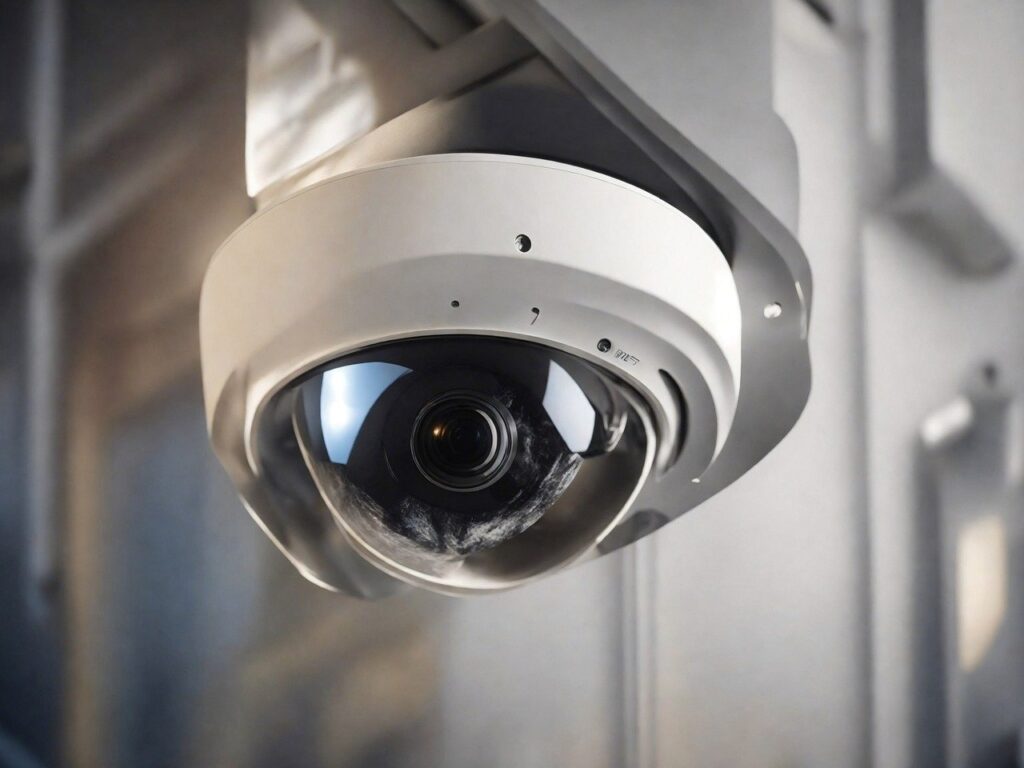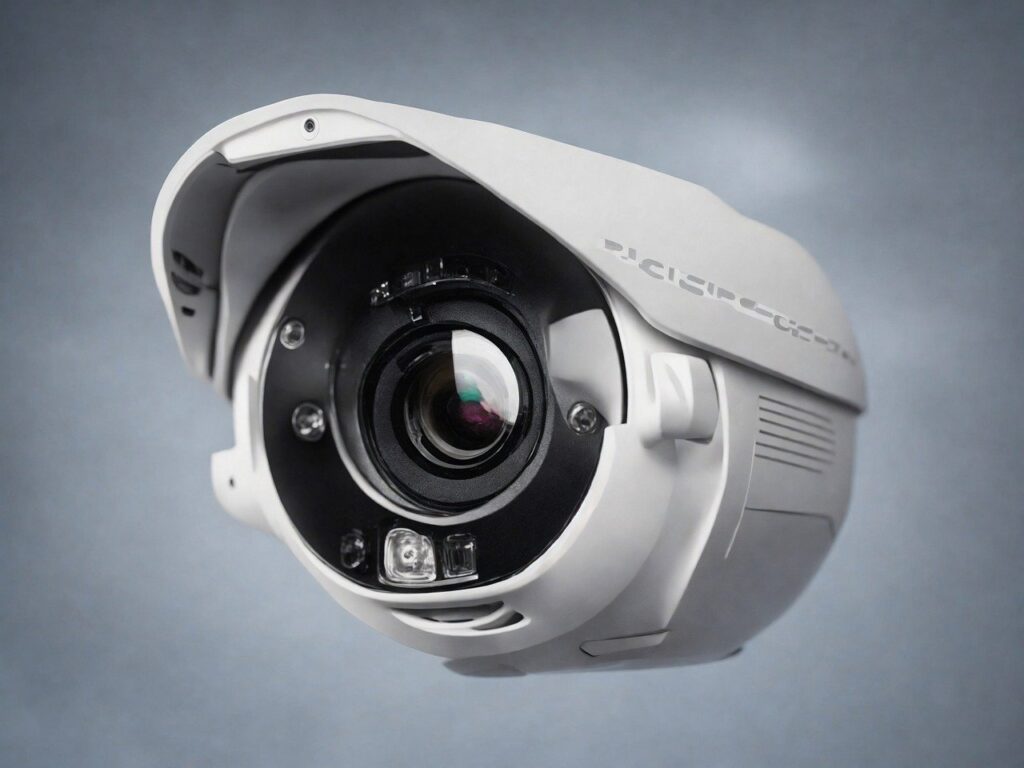Did you know that in Australia, property crimes including burglary and vandalism are a serious concern, especially in densely populated strata communities? Addressing these issues effectively is crucial for ensuring the safety and security of all residents.
One proven way to enhance security is through the installation of Closed-Circuit Television (CCTV) systems. This article aims to guide strata board members and property managers on how to effectively advocate for the installation of CCTV systems during strata meetings.
By exploring the benefits, addressing legal considerations, and providing practical implementation tips, we aim to empower communities to take proactive steps towards safeguarding their properties.
Whether you’re already considering this option or are just starting to think about your community’s security needs, this guide will provide you with the essential information needed to make informed decisions and build consensus among residents.
The Need for CCTV in Strata Communities
Strata communities, with their shared spaces and close living quarters, face unique security challenges. Issues such as unauthorized access, theft, and vandalism are not uncommon, making it imperative for these communities to consider enhanced security measures.
For instance, common areas like parking garages, laundry rooms, and recreational facilities are often targets for criminal activities due to their accessibility to non-residents.
Statistical data supports the implementation of security measures like CCTV. Research indicates that visible security systems, including cameras, significantly deter potential offenders.
A study in Australian urban areas found that properties equipped with surveillance systems experienced fewer incidents of property crimes compared to those without.
The benefits of installing CCTV systems in strata communities extend beyond just crime prevention. These systems provide continuous monitoring, which can be critical in gathering evidence in the event of security breaches.
Additionally, the presence of CCTV cameras increases the overall sense of safety among residents, contributing to a more secure living environment. By recording all activity, CCTV systems not only help in resolving disputes and preventing crime but also assist in managing access to the premises, ensuring that only authorized individuals enter the complex.
How Do CCTV Systems Work and What Are the Options?

CCTV, or Closed-Circuit Television, is a technology used for monitoring and recording activities in various environments.
It operates on the principle of placing cameras in strategic locations and linking them to a private network.
This setup allows the images captured by the cameras to be sent to a specific set of monitors or recording devices, ensuring that the footage is accessible only to authorized personnel.
Modern CCTV systems can also be connected to the internet, enabling remote monitoring from any location.
When it comes to choosing the right CCTV system, there are several options available:
- Wired vs. Wireless Systems: Wired cameras are connected via cables, which generally means they have a stable connection and are less susceptible to interference. However, installation can be more invasive and costly. Wireless systems, on the other hand, offer easier installation and flexibility in camera placement but can be more vulnerable to signal disruption.
- Monitored vs. Unmonitored Systems: Monitored systems are watched by a professional security company, which can provide real-time alerts and contact emergency services if needed. Unmonitored systems, while cheaper, rely on the residents or property managers to review footage and respond to incidents.
When selecting a CCTV system, several factors should be considered:
- Camera Resolution: Higher resolution cameras produce clearer images, which can be crucial for identifying faces or license plate numbers. Common resolutions include 720p, 1080p, and 4K.
- Field of View: This determines how wide an area each camera can cover. A larger field of view might reduce the number of cameras needed but can also lower the detail captured within its range.
- Night Vision: Cameras equipped with infrared (IR) technology can capture clear video in low-light or no-light conditions, essential for round-the-clock surveillance.
Choosing the right CCTV system involves balancing these factors with the specific needs and constraints of the strata community, ensuring that the system is both effective and efficient.
How Should Strata Communities Plan and Budget for CCTV?
Planning and budgeting for CCTV installation in strata communities involves a systematic approach to ensure that the security needs are met without overshooting financial constraints.
Here’s a step-by-step guide on how strata communities can effectively plan and budget for CCTV systems:
1. Assess Security Needs
Conduct a thorough security audit of the property to identify vulnerable areas and determine the scope of surveillance required. This might involve consultations with security experts and discussions with residents to understand their concerns.
2. Research CCTV Options
Explore different types of CCTV systems, including wired, wireless, monitored, and unmonitored systems. Consider the specific needs identified in the security audit to choose the appropriate technology, camera resolution, field of view, and night vision capabilities.
3. Get Multiple Quotes
Obtain quotes from several vendors to compare prices and service offerings. This will help in finding the best deal and ensure that the chosen system offers good value for money.
4. Consider Installation and Maintenance Costs
Include the cost of installation, which can vary significantly between wired and wireless systems. Also, plan for ongoing maintenance costs, including occasional repairs, replacements, and technical support.
5. Set a Budget
Based on the quotes received and the additional costs for installation and maintenance, set a realistic budget. It’s important to factor in a contingency allowance for unforeseen expenses.
6. Explore Funding Options
Check if there are any government grants, local community funding, or security incentives that can offset the cost of the CCTV system. Some local councils in Australia offer grants for community safety initiatives.
7. Proposal Preparation for Strata Meeting
Prepare a detailed proposal that outlines the security needs, the benefits of installing CCTV, the system options considered, the costs involved, and the preferred vendor. This proposal will be presented at the strata meeting for approval.
8. Secure Approval
Present the proposal during a strata meeting. Be ready to answer questions and address any concerns raised by the residents. It’s crucial to highlight the benefits of the CCTV system, such as enhanced security, deterrence of criminal activity, and increased property value.
9. Implementation Plan
Once approved, develop an implementation plan including a timeline for installation, testing, and training for residents on how to use the system.
10. Review and Adjust
After installation, review the effectiveness of the system and make adjustments if necessary. This might involve adding more cameras or upgrading existing equipment based on feedback and evolving security needs.
Gaining Support at Strata Meetings
Gaining support for a CCTV installation in strata meetings involves thoughtful preparation and effective communication. Here are strategies for presenting the proposal effectively, preparing for common questions and opposition, and engaging with community members to build consensus:
Strategies for Presenting the CCTV Proposal Effectively
Clear and Concise Presentation
Prepare a well-structured presentation that highlights the key benefits of installing CCTV, such as improved security, potential crime deterrence, and enhanced resident safety. Use clear visuals, like diagrams of proposed camera placements and statistics on crime reduction.
Demonstrate Value
Show how CCTV can add value not only through security improvements but also by potentially increasing property values and reducing insurance premiums.
Use Case Studies
Include examples from other strata communities that have successfully implemented CCTV systems. Highlight their process, the challenges they faced, and the positive outcomes.
Preparing for Common Questions and Opposition
- Anticipate Concerns: Be prepared to answer questions about costs, privacy issues, and the technical aspects of the CCTV system. Compile a FAQ sheet that addresses these concerns based on your earlier research and consultations.
- Privacy Concerns: Address privacy issues upfront by explaining how the cameras will be positioned only in public areas and how the system complies with privacy laws and regulations.
- Cost Justification: Provide a detailed breakdown of the costs involved, including long-term savings and the potential for reduced vandalism and theft.
Importance of Engaging with Community Members and Building Consensus
Community Consultation
Prior to the meeting, conduct informal consultations with residents to gauge their concerns and suggestions. This can help refine the proposal to better fit the community’s needs.
Interactive Sessions
During the strata meeting, engage in interactive discussions rather than just presenting. Allow residents to voice their opinions and concerns, and be responsive to their feedback.
Build Trust
Emphasize the collaborative nature of the decision-making process. Show that the primary goal is the welfare and safety of all residents, reinforcing that the CCTV system is a community asset.
Follow-Up
After the meeting, provide additional information and updates to residents via community newsletters or a dedicated section on the community website. Keeping the lines of communication open is key to maintaining support and addressing any emerging concerns.
What Are Some Implementation Tips for CCTV Systems?

Implementing a CCTV system in a strata community involves careful planning and execution to ensure it meets the security needs effectively while adhering to legal standards. Here are some key tips to guide the implementation process:
1. Select the Right Equipment
Choose cameras and recording systems that match the community’s specific security needs. Consider factors like resolution, field of view, and low-light capabilities to ensure comprehensive coverage.
2. Strategic Camera Placement
Position cameras in strategic locations to maximize coverage and effectiveness. Key areas might include entrances, parking lots, recreational areas, and other common spaces. Ensure that the cameras are placed high enough to prevent tampering but still capture clear images.
3. Ensure Legal Compliance
Familiarize yourself with local regulations regarding surveillance and privacy. Make sure that all camera placements comply with these laws, especially in terms of covering common areas without invading private spaces such as inside someone’s property.
4. Professional Installation
Use qualified professionals for installation to ensure that the system is set up correctly and functions reliably. Proper installation helps prevent issues like blind spots in camera views and potential system failures.
5. Network and Power Backup
Ensure that the CCTV system has a reliable power supply and network connection. Consider installing UPS (Uninterrupted Power Supply) systems to keep the cameras running during power outages. Adequate data storage and backup solutions are also crucial for maintaining access to video archives.
6. Regular Maintenance
Schedule regular maintenance checks to ensure the system’s optimal performance. Maintenance tasks might include cleaning camera lenses, checking data integrity, and updating firmware to protect against cyber threats.
7. User Training and Access
Train community members and security staff on how to use the CCTV system effectively. Include how to access live feeds and recordings, and who has the authority to access this information. Clear guidelines should be established regarding the handling and viewing of surveillance footage.
8. Community Engagement and Feedback
Keep the community engaged by providing updates about the system’s effectiveness and any security incidents it helped resolve. Open channels for feedback to understand residents’ concerns and suggestions for system improvement.
9. Privacy Protection Measures
Implement measures to protect the privacy of the footage, such as secure storage, controlled access, and clear policies on data retention and disposal.
10. Review and Adapt
Regularly review the system’s performance and the evolving security needs of the community. Be prepared to adapt the system as necessary, whether by adding more cameras, upgrading technology, or enhancing data security practices.
Key Takeaway
Implementing effective security measures like CCTV systems, alarm systems, access control, and home intercoms significantly enhances community safety and cohesion.
At Austguard in Western Australia, we specialize in providing top-tier security solutions tailored to meet the unique needs of strata communities.
By strategically integrating these systems, communities can monitor activities, deter crime, and ensure a safer environment for all residents.
Taking proactive steps to enhance security is crucial. We encourage strata communities to consider the benefits of comprehensive security systems that not only protect properties but also foster a sense of safety and community spirit.
The installation of such systems by professionals, like those at Austguard, guarantees reliability and effectiveness, reinforcing community ties and promoting peace of mind.
Embrace advanced security solutions with Austguard to make your community a secure, connected, and harmonious place to live.
